How to iron linen and clothes correctly?

In any home, you can find several dozen textiles. But even the highest quality linen, even excellent clothes, need to be ironed periodically. Knowing the specifics of this work allows you to avoid many problems and save time.
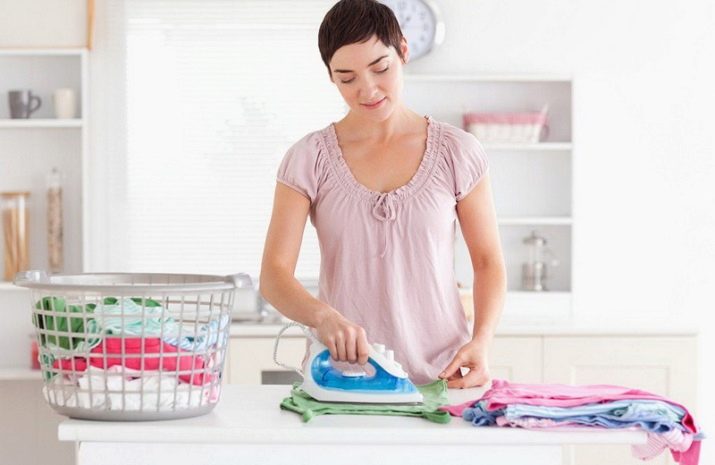
Ironing methods
The oldest type of ironing (not losing its relevance) is the dry technique. It is quite fast and can be applied to various things from the inside out and from the face. Many people, however, prefer to iron their fabrics with moisture. There are several ways to add water:
- wetting the surface by hand;
- spraying from a spray bottle;
- wrapping in a damp cloth;
- a pad of wet gauze.

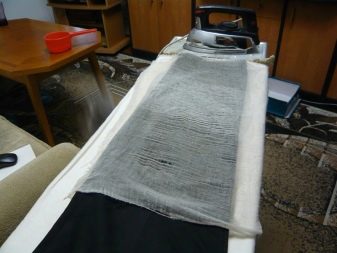
A more modern approach is steaming. It is only possible if the iron has a corresponding function. Alternatively, you can use a steamer. But it is important to understand that you cannot steam any matter that shrinks. It is necessary to carefully check whether such processing is permissible for the selected product.


A vertical steamer, unlike an iron, provides ironing even for bulky items, eliminating the appearance of creases. This device is recommended for:
- jackets;
- jackets;
- lush outerwear;
- freshening clothes without pre-washing.
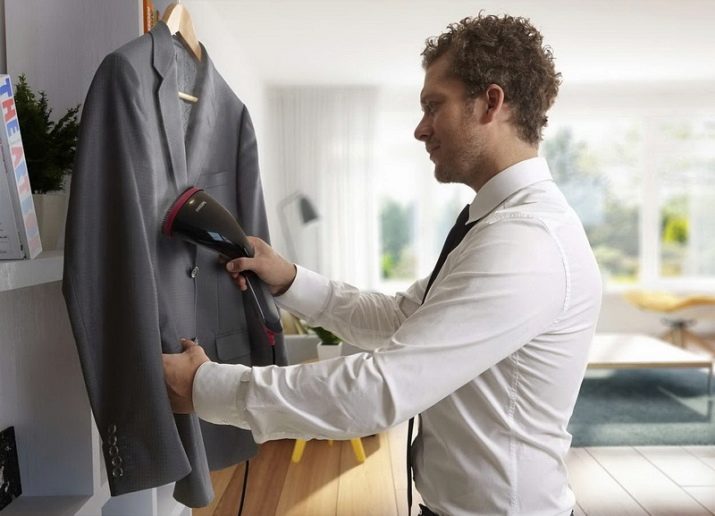
But we must also remember the weaknesses. For example, the steamer is not suitable for horizontal ironing. It will not cope with seams either. If these problems are not relevant, a steamer will save a lot of time compared to an iron. A more perfect option is a steam generator. It combines the advantages of an iron and a steamer, and the only problem can be large dimensions.
In some situations, you have to iron without any special devices. Then they use the following techniques:
- hanging over a hot tub for 30 minutes and drying in another room;
- steaming from a kettle;
- ironing with a steel mug or a saucepan with a flat, clean bottom.

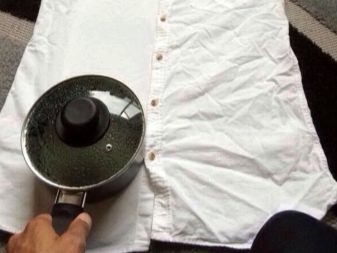
Different types of fabrics
But still, "extreme" ironing methods are used only occasionally, for special need. Most often, an iron is used in everyday life - and it must be used in a special way, depending on the matter to be processed. Chiffon and silk are ironed at 70 or 80 degrees. Less heat will not work, and if you increase the temperature, you can ruin the thing.
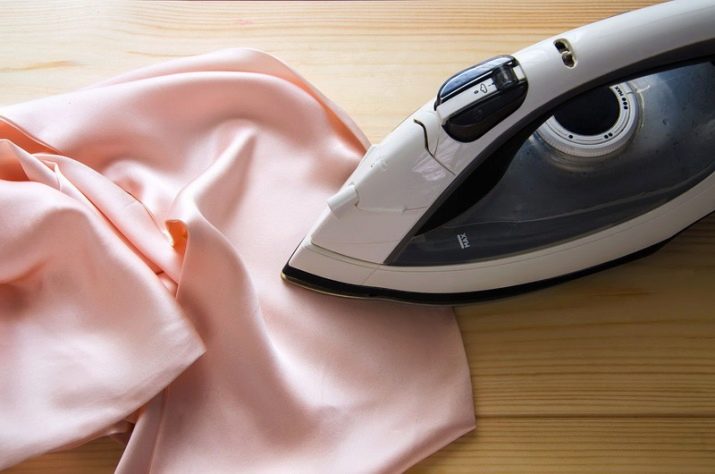
For your information: with the same heating, it is necessary to process nylon (without ironing in the true sense of the word, using a "steam boost").
A higher temperature - from 100 to 120 degrees - will be required for semi-wool and wool. These types of fabrics are best treated with irons with special soles. These attachments are far more effective than the old-fashioned gauze pad. It is possible to smooth the coat with such an apparatus without the characteristic unpleasant shine. You can also use a steamer (according to the instructions).
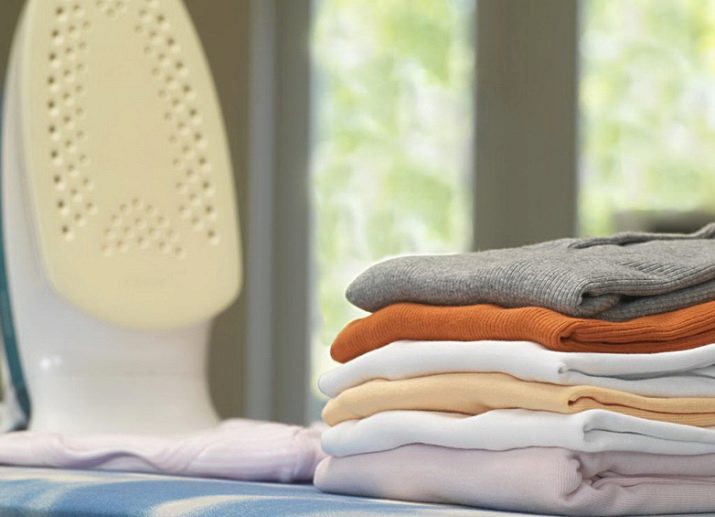
It is recommended to process linen and cotton at 150-180 degrees. For optimal results, the fabric must be thoroughly wetted. Therefore, it is recommended to use irons that can spray water. It is advisable to steam linen clothes or linen before the end of ironing. Rough jeans are ironed at significant heating (180-200 degrees), since more gentle modes are not effective enough.

A more accurate approach is needed for lining materials - satin and silk. They are ironed strictly from the inside out. Attention: in this case, even the slightest moisture is not allowed. Not only can you not wet; it is necessary to protect matter from small drops of water. Therefore, for regular ironing of silk and satin items, it is advisable to take an iron with an anti-drip function.
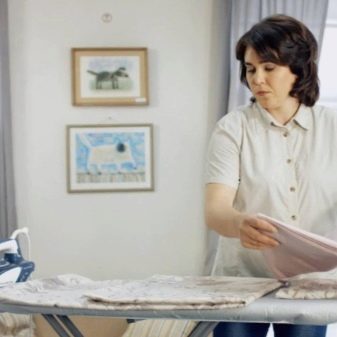
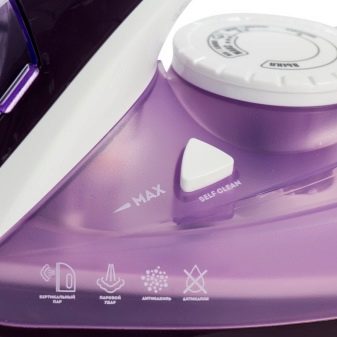
Synthetics, in contrast to the disassembled options, may well be moistened. But here there are other requirements: ceramic sole and anti-static effect. Viscose can be considered an exception - like silk, it is ironed only in a waterless mode. All things made of chintz are not ironed from the inside out. The iron should only touch the front side, it is advisable to moisten the clothes for the best effect.
Velvet and plush products are tidied up only on the reverse side.

Instead of ironing, you can simply hold the fabric, fluff down, over the steam. Terry cloth cannot be ironed in principle. Breaking this rule can make things harsh and uncomfortable in everyday life. When working with knitwear, one should not rush, be sure to allow ironed products to cool down before putting them back into the closet.
How to iron different things?
Knowing how to handle different fabrics is very helpful. But it must be borne in mind that ironing of each type of things, even made of the same material, is carried out according to special rules. For all the complexity of ironing bed linen, it brings significant benefits. And it's not just aesthetics: an ironed sheet or pillowcase will wear out less and are more comfortable.
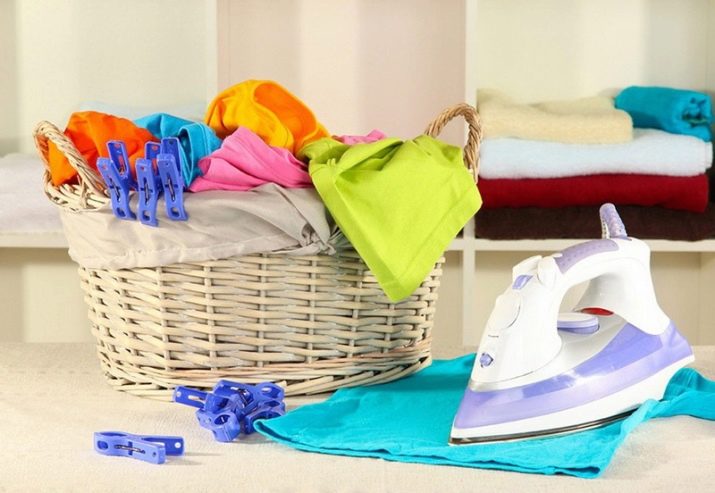
For your information: if the washing machine has a special mode, additional manual processing is not required.
There are several guidelines for ironing your bed linen properly after washing. First, you should check if there are any foreign stains. It is advisable to handle all parts of the sleeping sets from the wrong side. It is necessary to drive the iron on the front side only for very serious wrinkles. In order not to damage the appliques, protective nets are applied.
Lead the iron strictly along the seam, from beginning to end. The easiest way to iron bed linen is by moving along the transverse and lobular fibers. This technique additionally allows you to prevent damage to products. Before starting work, things are sprayed with a spray bottle. Wait 5 or 10 minutes for the moisture to absorb.


Ironing of various types of clothes has its own characteristics.So, before processing a blouse, you need to check whether the sole is clean. If there is even the slightest dirt, you cannot rush - you must first clean everything up. A special pencil is used for cleaning. Baking soda is a good substitute.
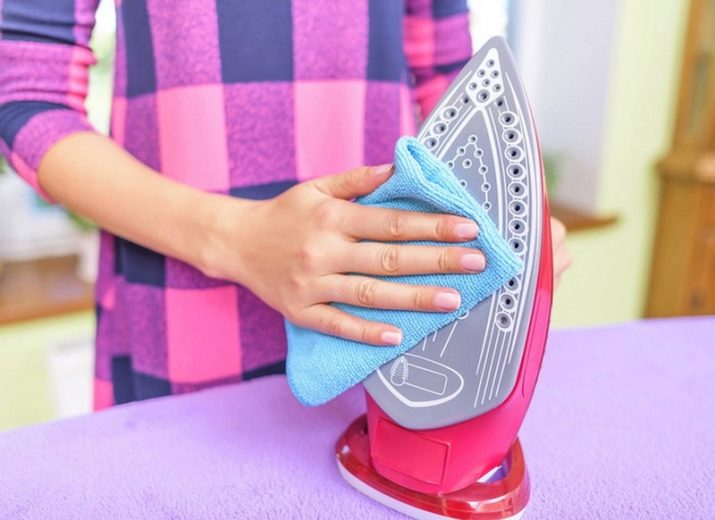
Important: only clean blouses are ironed, otherwise they will only get even more dirty. Any button, even located on the cuff, is unbuttoned in advance.
You need to iron in this order:
- the wrong side of the collar;
- the front of the collar;
- the wrong side of the cuffs;
- the front of the cuffs;
- yoke;
- sleeve;
- seamless part;
- all that's left.
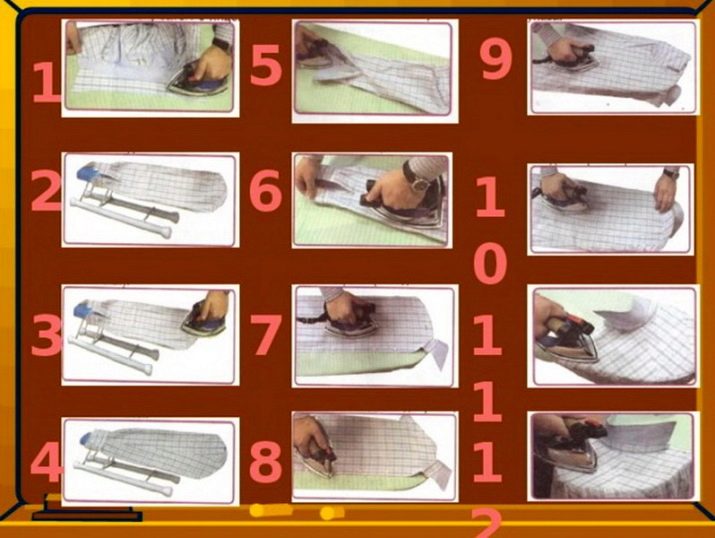
Often, when preparing for a wedding, it becomes necessary to iron not only a blouse, but also a veil. It is necessary to approach this work even more carefully and carefully than to ironing everyday clothes. They start, as always, by learning about labels. The iron is set to minimum heat. Only tulle products are processed at 120 degrees. But it is also advisable to iron them at a lower temperature.
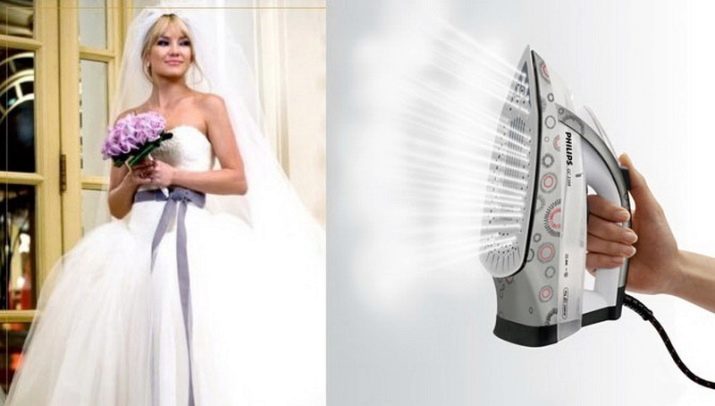
Put on top of the product:
- special fabric;
- thick paper;
- dry gauze cloth (optional).
The most difficult thing is to put in order the places where there are flowers, beads and other decor. Such areas are covered with towels in advance. Start work without supplying steam. All emerging creases are continuously eliminated. If folds still remain on the veil ironed in this way, then you will have to use the steaming mode.
A more correct approach is to use a steam generator. He will tidy up the veil on the hanger and will do it much safer than an iron. Some people replace steamers and steam generators with hair dryers. These devices are switched on at an average blow rate. Previously, the product is sprayed with water, then dried from the collar to the bottom line.
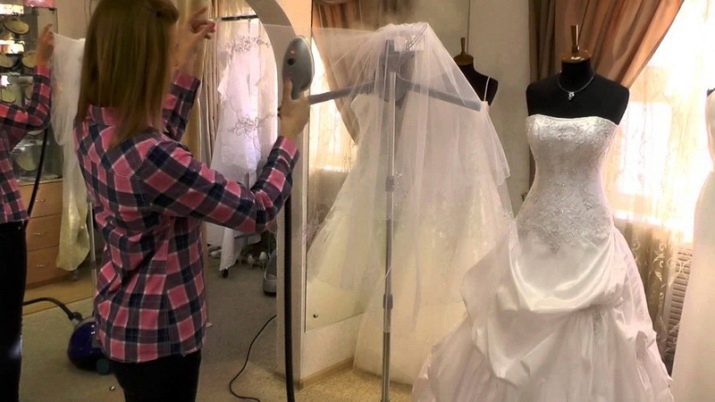
But no matter how important a wedding veil is, you often have to iron other wardrobe items at home. For example, a medical cap and a gown (or their chef's counterparts). It is recommended to use ironing boards for work, after assessing their cleanliness and reliability. When it is impossible to use a board, the caps are laid out on a flat surface, most often on a table. You can iron the uniform only with a clean iron, which is warmed up to the required temperature.
Only filtered or distilled water is used for humidification and steaming of caps and gowns. Do not iron dirty clothes. All inserts of bathrobes, which can become stained from water, are ironed only without steam. It is recommended to turn gowns and caps inside out. The top, side and bottom seams are sequentially ironed.
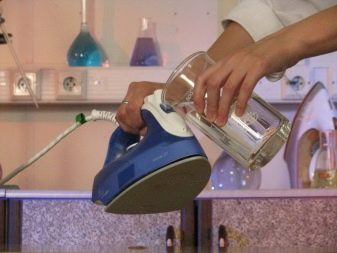
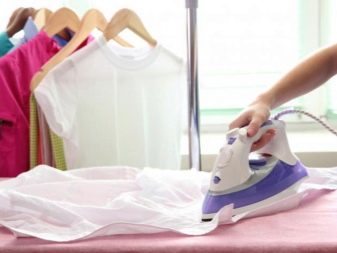
It is not recommended to move the stretched fabric. It can rip easily. It is advisable to pull back the seams on one side, firmly fixing them on the other side. Only after ironing the seams, you need to work with darts. The presence of the slightest arrows is unacceptable.
The cap is ironed a little differently than the cap. It is necessary to apply the classic army method:
- turn the three-liter glass jar upside down;
- wrap a towel around it;
- put on a headdress;
- bring it to perfect condition.

There are also some simple tricks to ironing a polo shirt quickly. The T-shirt must be straightened. The collar is placed as needed. The clothes turned upside down are folded lengthwise, then smoothed out, trying to eliminate the slightest fold. Turn the T-shirt over twice (alternately ironing the front and back sides), then turn it inside out and check all the folds again.
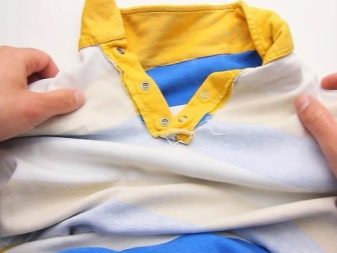
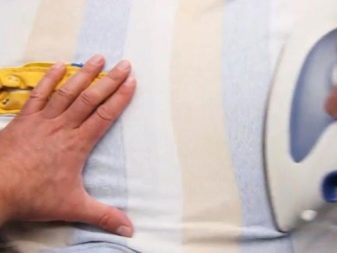
Helpful hints
Whatever textiles you have to iron, whatever fabric they are made of, there are a number of subtleties that must be taken into account. Steaming is used when you need to smooth over dried fabric or wardrobe item that should not touch the hot sole. You need to work only in a comfortable, light and dry place where there is a solid surface of the required size.It is advisable to decide in advance where the ironed things will be folded - they must remain clean and not additionally creased.
Before starting ironing, you need to make sure that the iron itself, wires, plugs and sockets are reliable. Do not touch the heated sole with the wire. Handle the iron only with dry hands. Ideally, you should stand on a rubber mat and not grab the iron handle while touching another metal object.
In addition to strict adherence to safety rules, it is useful to learn how to iron with starch. Such processing is unacceptable for wool and artificial fiber products.
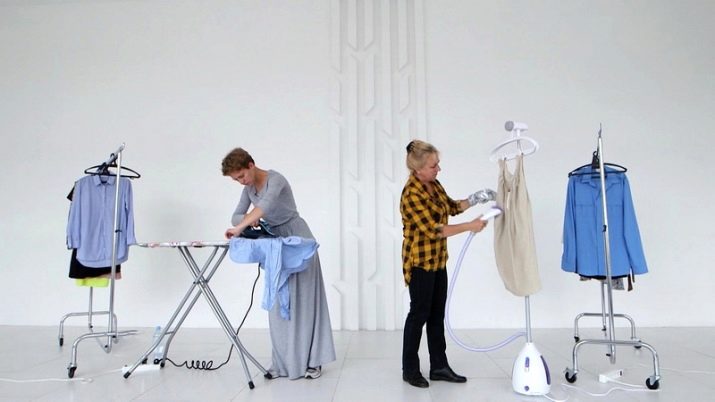
Important: starched dark clothing made from any fabric can look ugly. It is undesirable to starch children's clothes and wardrobe items used in summer, or covered with embroidery floss. Only clean clothes can be processed with starch. The amount of powder used is selected individually, depending on how hard they want to achieve.
An important role during work is played by a competent choice of an ironing cloth. But it is also necessary to cover it with a protective heat-resistant coating that will withstand long-term operation. Ironing cloths are easily fixed on tables using special fasteners. Removing them later is also not difficult. The linen is easy to wash, unlike regular fabrics.
But if there is no such material, you can put an ordinary bedspread on the board as a bedding. The main thing is that its material can withstand prolonged heating.
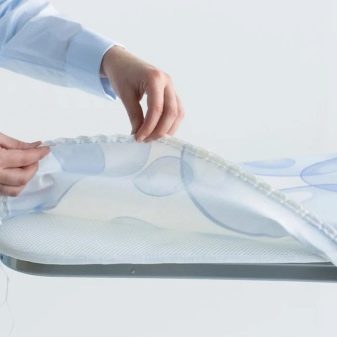
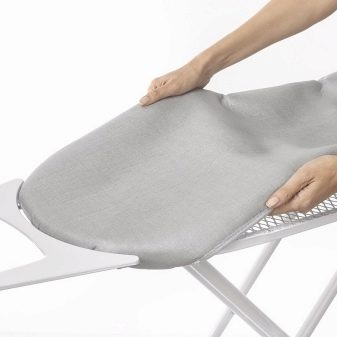
When selecting a cloth or preparing a bedspread, only the surface for ironing itself should be considered. The place where the iron itself will be placed can be ignored. It is useful to use special coatings with reflective surfaces.
For information on how to iron clothes correctly, see the next video.








